In conversation with: Marine biologist, Ben Fitzpatrick
Remix had the pleasure of chatting to Ben Fitzpatrick, a distinguished marine biologist who has gained international recognition not just for his groundbreaking work in marine conservation, but also for his unique partnership with Rolex. As part of our Dreamers Edition, it was a privilege to chat to Ben about his life as a marine biologist and how this has impacted his life.
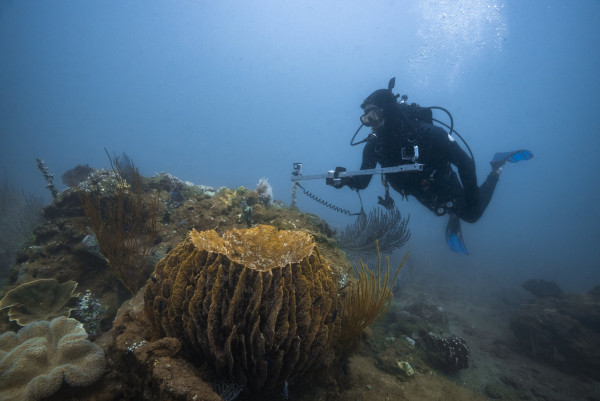
Ben, tell us a little bit about how you became a Marine Biologist.
From a very young age I had a fascination with nature. I was lucky enough to grow up near the beach in Perth where I spent a lot of my time fishing, snorkelling and surfing. Most holidays went camping somewhere along the coast, which gave me endless opportunity to discover new fascinating marine environments and critters including some of the most pristine coral reefs of Ningaloo Reef. Where encounters with some of the planets most incredible marine wildlife is possible right off the beach. Watching endangered marine turtles nesting on an isolated beach is literally witnessing modern day dinosaurs and something we are so privileged we can still do. Sharing the experience of swimming with a whale shark with people of all walks of life including some that are in their last days can have a very profound impact on people. And I believe it is so critical to getting us all to change the way we interact with the natural world.
What have you been doing more recently at a Hope Spot at the Exmouth Gulf and Ningaloo Coast in Western Australia?
We have spent the last 25 years progressing the science and conservation of Exmouth Gulf and Ningaloo Reef. The last five years has been spent focusing on increasing the public awareness of the absolutely amazing ecosystems and biodiversity of Exmouth Gulf. It contains one of the last relatively undisturbed examples of an arid zone mangrove system in this art of the world. It is a nursery area for humpback whales, dugong herds graze the seagrass beds, there are significant aggregations of feeding manta rays, it is one of the only known popping sites for critically endangered green sawfish, something like ~850 species of fish, a hotspot for 15 species of sea snakes, critically endangered hawksbill turtles nest on its beaches, it contains extensive areas of filter-feeding sponges, soft corals and hard corals, as well as a whole suite of highly endemic crustaceans, echinoderms and molluscs and is very closely associated with the most diverse subterranean ecosystems on the planet. A whole plethora of globally significant values in one of the most incredible wild places left on the planet.
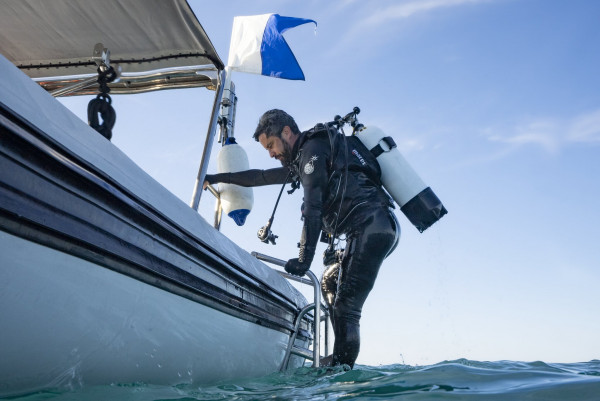
Describe the crucial moment when you dared to dream and what prompted it?
I was in my earliest years of schooling and as I said before developed a very real affinity for nature from a very young age, particularly the marine environment. My grandfather used to migrate north away from the cold and into the warmer weather of Ningaloo Reef. Every year he would return with stories of dugongs, giant trevally, coral reefs, whale sharks and coral spawning. At that time very few people even in Western Australia knew about Ningaloo. So I dared to dream of a career studying the animals of the place and have pursued it with everything I have. I am one of those lucky people who have always known what I wanted to do.
How and when did your dream become a reality in your work?
In 1998 after finishing my degree at UWA I bought an old 1969 Land Rover, packed my dive gear, surfboard and dog and drove straight to Exmouth. In that first year, I self-funded surveys of the most extensive areas of coral reef lagoon adjacent Tantabiddi Boat Ramp and submitted a report to the Government in support of creating a sanctuary zone. In 2005 that sanctuary was declared and to this day supports a glass bottom boat operation that is one of the most popular nature-based tourism experiences thousands of people experience each year.
You’ve dedicated decades to this cause, can you please expand on the type of protection you’re achieving of the area’s unique and precious marine life?
Ever since that initial survey I have contributed many more like it. In 2003 I initiated a survey of an area that was being considered for a monstrous residential and tourist resort type marina complex smack bang in the middle of the Ningaloo Reef. It was in large part self-funded with some support from the Save Ningaloo Campaign. I got a boat, a small team of scientists and we surveyed the marine life within the bay earmarked for development. I spent a year writing the report and submitted it to the Environmental Appeals office which added to the massive public support for protection of the reef generated by the public facing Save Ningaloo Campaign. Thankfully the government adopted many of the reports recommendations including the rejection of the proposed development and the creation or expansion of two sanctuary zones at that location. Nowadays swimming with manta rays that feed on plankton right on the spot where the marine entrance would have been built is one of Coral Bays most sought after nature based experiences. My PhD was all about the efficacy of no-take areas throughout the marine park. More recently I contributed a review of the Exmouth Gulf Environmental and Socio-economic values recommending three things — a cumulative impact assessment under the EPA Act, a research program and creation of a spatial management plan. The Government again has undertaken the cumulative impact assessment, announced a proposed marine park and established the Exmouth gulf Taskforce to consider the area’s future. Research focus has intensified in recent years with contributions providing significant insight into marine and coastal ecosystem response to climate change of global importance.
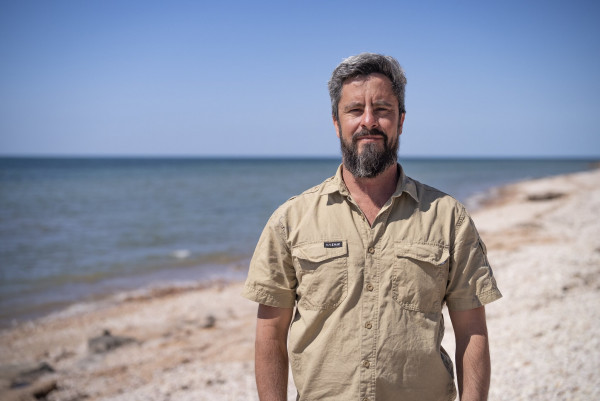
Who or what inspired you to become a Dreamer?
I have to say nature. I sincerely cannot go past that experience I get when truly surrounded by andimmersed in a natural landscape full of plants and animals. And perhaps beyond that and into sharing that with people. Nature can have such a really positive impact on people— to such a degree that they will strive to spend their last living moments pursuing a swim with a whale shark. And the more people connect the more likely we are to make the right decisions regarding protecting nature into the future.
What is your earliest memory of marine life?
Snorkelling for the first time around Trigg Island with my school friend swimming through caves, kelp beds, seeing octopus, and schools of herring, whiting, bream. Also spending hot summer nights chest deep in frigid blackwater pulling a prawning net in the Swan River — never quite knowing if your next step is going to land on top of a stingray or cobbler spine (I learnt it was much wiser to shuffle your feet rather than step). Also catching blue Manna crabs in Cockburn sound on freezing cold mornings. In all instances it was being able to see these animals first hand that captured my attention so much so I have been doing it ever since.
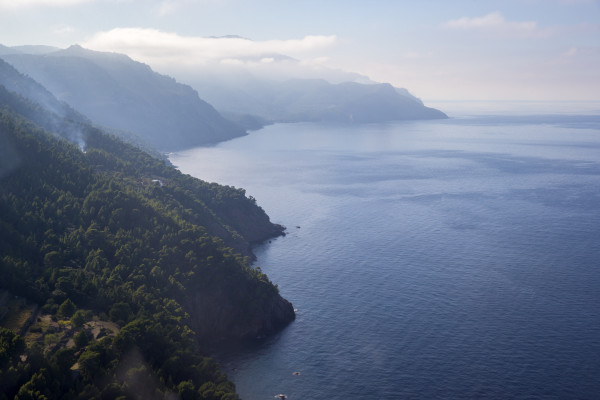
Tell us about how you feel being part of and having the support of the Rolex Perpetual Planet Initiative and Mission Blue.
The Rolex Perpetual Planet Initiative and Mission Blue initiative are supporting the exploration and science of the marine environment in the effort to gain greater protection. These organisations are sincerely making it possible to undertake foundational work that is necessary to argue the case for greater protection of certain areas. They provide support without which these areas important to the conservation of biodiversity will often likely be subject to inappropriate coastal development and other destructive activities. In the case of Exmouth gulf it was once subject to development with what would have been a devastating large salt mine, or a pipeline manufacturing facility to support the offshore oil and gas industry. Even with the highlight on these irreplaceable environmental values the area is being proposed for development of another salt mine and a deepwater port. There are a lot of organisations fighting for the area and adding the support of Mission Blue and the Rolex Perpetual Planet Initiative really helps reach more.
What is your fondest memory experiencing the Humpback Whale in its natural habitat?
There was one time I got in the water to do some coral reef surveys and the water was humming with whale song. The air in my lungs was literally resonating with their calls. During the dive the feeling was getting particularly strong. And sure enough I looked up as this giant whale approached me. Within moments there was nothing but a wall of whales just a few inches beyond my reach. Then this giant brown mammalian eye the size of a watermelon, with an iris and pupil took a good long look at me before swimming on. I think it was checking to see if I represented any danger because after he passed by the rest of the pod casually swam past too. At no time did I feel threatened but at the same time I just knew it had a close eye on me.
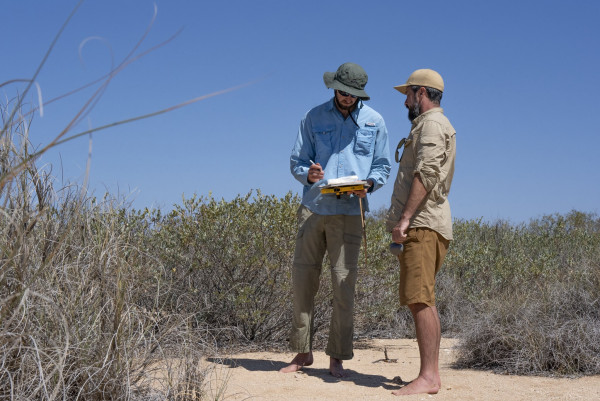
How does Rolex and its Perpetual Planet Initiative help support you in your quest to protect marine life?
Rolex provides the benefit of reach and helps my work reach a wider audience, many who no doubt find this amazing place for the first time. Places like the Exmouth gulf and Ningaloo Reef Hope Spot and the hundreds of other hope spots around the world are becoming increasingly rare in this increasingly overcrowded planet. Now more than ever as the teeth of climate change cut into the integrity of coastal and Marine ecosystems worldwide, as the threats to biodiversity mount, protecting remaining wild places has never been more important.
What do you dream of for a better future?
An economy that eliminates net negative ways of deriving goods and services and instead results in net positive ways of deriving goods and services. For instance fisheries that improve rather than destroy essential marine habitats like oyster reefs, seagrass beds, coral reefs and kelp forests would be a great place to start. Another example would be reinstating coastal wetlands, restoring mangrove forests and coral reefs to protect coastlines rather than building concrete breakwalls, groynes and concrete coastal defences. The benefit being creating new habitats for biodiversity, improving the nursery habitats for fish and protecting our low lying coastal infrastructure and coastal land from storm damage and coastal erosion. Integrating nature into our decision making and ensuring a positive economic and environmental win at every opportunity. Never has the opportunity been so great nor the stakes so high. If we don’t start making better decisions, we face the very real risk of ecosystems like coral reefs becoming functionally extinct and that would be a travesty for future generations, the billions that depend upon these ecosystems for their daily subsistence and the incredible array of marine life that depend upon us making good decisions now. I sincerely want my descendants to get to experience what it’s like to see these incredible animals for themselves, first hand and in real life and not out of books. We are the last generation that can make those decisions and that is unprecedented in human history.



